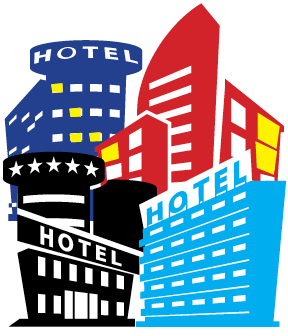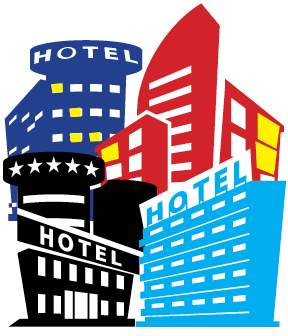 “I like to go for cinches. I like to shoot fish in a barrel. But I like to do it after the water runs out.” – Warren Buffett
“I like to go for cinches. I like to shoot fish in a barrel. But I like to do it after the water runs out.” – Warren Buffett
When you’ve been in this business long enough to see a few investment cycles, the ubiquity of the herd mentality never ceases to amaze. When the market is crashing, many perfectly good assets cannot be financed. And when the market is hot, lenders will trip over each other with bids. The lender that wins usually borders on the irrational. Such is the case in the hotel finance market today.
The recent anniversary of the 9/11 terrorist attacks reminded me how hotels suffered after the disaster, as people feared flying and stopped booking hotel reservations. Cash flows dropped, cap rates increased, and it took the market a couple of years to recover. More recently, the financial crisis of 2008/2009 had a similar impact on hotels, as folks drastically cut back on consumer spending and cash flows on many hotels were halved, with countless assets either in foreclosure or workout.
By 2011, a well-flagged, full service hotel could be financed if you were willing to pay a 50-75 basis point premium as compared to other product types, and you would also have to keep the leverage modest: under 60 percent LTV.
And today? The wheels have fallen off. The metrics for hotels are almost identical to all other asset types. Interest rates are, at most, 10-15 basis points higher than other asset types. Debt yields, which never broke 10 prior to 2014, are now down to eight (in Manhattan) and high-quality, limited service hotels (like, say, a Hilton Garden Inn) are sometimes even preferred over full-service hotels.
What is driving this frenzy? First off, the obvious: pent-up demand. For the prior five years, securitized lenders were limited to a maximum of 15-20 percent hotel loans within any securitization, essentially. So lenders demanded a premium, quoted low LTVs and were very selective on what loans they would consider. Now that the premium is non-existent and note buyers are willing to buy pools with greater than 20 percent hotel exposure, hotel borrowers are seizing the moment and borrowing at a record pace. The numbers bear this out. Hotel loans in multi- borrower securitizations have grown from $3.5 billion in 2012 to $7.9 billion in 2013, and we will easily have already surpassed that figure in 2014.
Examples of the frenzy are mostly illustrated by the fact that tertiary locations and unflagged hotels are now being financed. KFK Group recently received $11.5 million for four “guest house” hotels in New Orleans on a five-year deal at a sub-5 percent rate. A North Dakota limited service hotel in the booming (for now) fracking area was recently financed by a conduit for $15 million on a five-year interest-only deal, albeit at a 5.5 percent coupon. On a larger scale, the San Juan Marriott & Casino was financed with a 75 percent LTV loan by a Puerto Rican bank for $115 million at Libor plus 385 basis points, on a five-year floating rate loan.
These are three deals that were undoable just a year or two ago, which is not to infer that these deals were poorly underwritten by the lenders. The combination of strong cash flow, solid 24-month history and low interest rates give these lenders a cushion in case of a downturn. But they point to the altered climate, wherein the caution of recent years has been thrown to the wind.
The obvious problem with hotel lending is that there aren’t any leases. If a Black Swan, or even a Gray Swan, if you will, were to occur, such as in 2001, cash flows could drop precipitously. And lenders and borrowers would have, again, a frenzied reorganization—one that destroys wealth, halts growth and hurts both parties.
Also, most flagged hotels require franchises to do periodic PIPs (Property Improvement Plans), which can sometimes be large capital expenditures. If a hotel is in a downturn at the time, the PIPs still have to be done. This is why a sudden swing of the pendulum is dangerous for hotel lenders and is also why these lenders have typically required a rate premium and more conservative underwriting.
Nowadays, to win a deal, hotel lenders are loosening restrictions considerably. Hotel lenders had generally required an occupancy adjustment, to help smooth out any spikes in demand, a franchise, marketing and management adjustment of 13-15 percent (even if the actuals were much lower) and a furniture, fixtures and equipment adjustment of 3 percent (even if those items were brand new). But now, winning the deal often means the lender has to go higher in the leverage stack without increasing pricing. For all of the above reasons, hotels should be underwritten more conservatively than multifamily, office and retail — but suddenly they aren’t.
Very likely, lenders will continue to be aggressive so long as the economy and hotel numbers move in the same bullish direction and new supply continues to be held in check. However, at the first sign of even a mild U-turn in either the economy or ADR, or, god forbid, an international incident that keeps people from wanting to fly, it will be the bond buyers that will be the “canary in the coal mine,” as they eschew buying the junior tranche of any hotel- heavy securitization. This will cascade down to all lenders, those premiums for hotel loans will return and tertiary product may not be financeable at all by traditional sources.
The takeaway? If you are a hotel borrower, the time is now to refinance especially before interest rates eventually spike. If you are a hotel lender, now is the time to exercise prudence and not stretch just to win a deal.
Dan E. Gorczycki is a managing director at Savills Studley in New York City.



